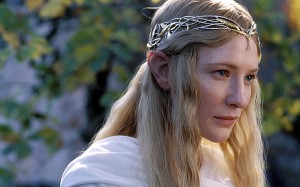As a child, I was so desperate to read that I would painstakingly scan the ingredients list on the tomato ketchup bottle when mealtimes kept me from my books. Perhaps that’s why I’m so relaxed about mixing easily devoured trash with genuine masterpieces.
Yet even I was taken aback by last week’s furore over the annual What Kids Are Reading report, which seemed to indicate that children are now shunning classics such as J R R Tolkien’s The Lord of the Rings trilogy in favour of books by David Walliams or Jeff Kinney’s Diary of a Wimpy Kid.
To be honest, this is a debate that is as predictable as a fairy‑tale ending with the words “happily ever after”. Every generation thinks that standards are slipping – in my childhood it was Enid Blyton in the line of fire, for my sister it was the Sweet Valley High series, and today it’s The Hunger Games. All have been roundly condemned for stopping children reading good books.
And yet children keep reading. Shouldn’t we be celebrating that children’s books sales were up by 9 per cent last year – and that seven out of 10 of the best-selling books in 2014 were for children or young adults? Many of those books today have messages as sophisticated as those in classics such as To Kill a Mockingbird. I’ve been gripped by The Fault in Our Stars by John Green, Wonder by R J Palacio or Keren David’s When I Was Joe trilogy.
Plus, let’s not blind ourselves to the fact that some “classics” don’t always deserve the title. I was delighted that Tolkien, the favourite author of nerds and fantasists, has finally slipped out of the “most popular” lists. What can account for the perpetual appeal of Middle Earth? I’m fully with Hugo Dyson, one of the “Inklings” – a literary circle of Oxford dons – who had to listen to Tolkien read out early drafts of The Lord of the Rings, until one day he could bear no more and shouted out: “Oh no! Not another —-ing elf!”
